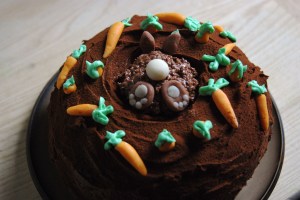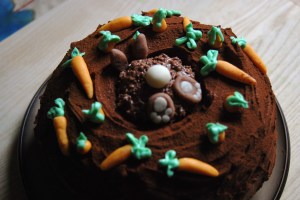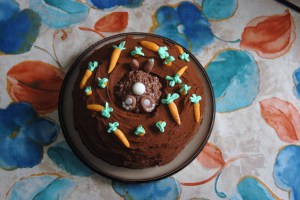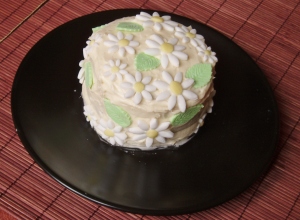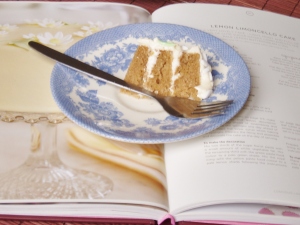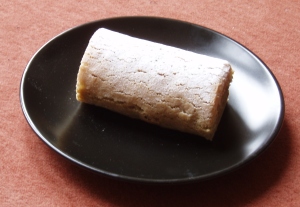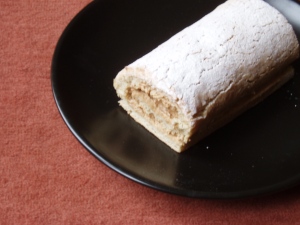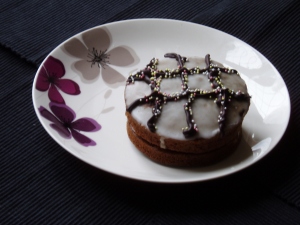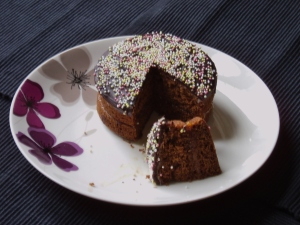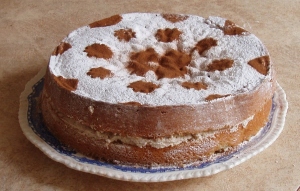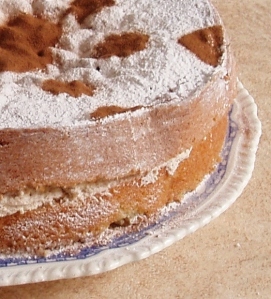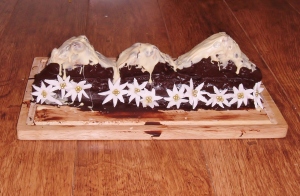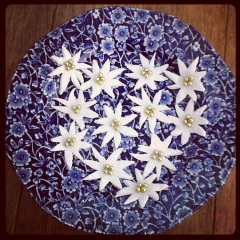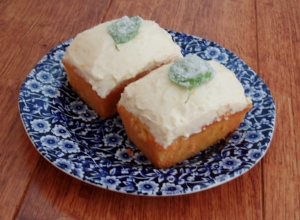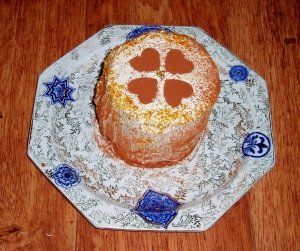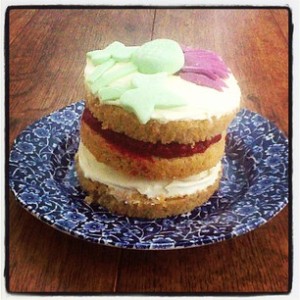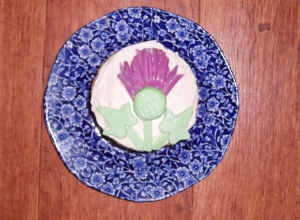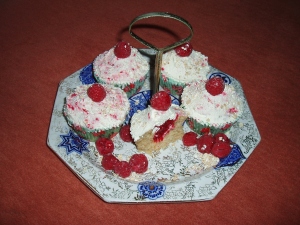Happy Easter everyone! I hope that your Easter has been enjoyable and chocolate-filled – apparently 2014 is going to see a worldwide chocolate drought… If you are like me, you will no doubt be stockpiling at this announcement (though I do believe this same announcement has been made for the past 3 years…)
No country for this bake, but rather a celebration of the occasion. I’m sure many of you will be using the bank holiday weekend to do some baking, and some of you may even be aiming to make this years popular choice – the bunny-butt cake! Seen in many different incarnations, from cupcakes to biscuits, the bunny-butt seems to have taken over from the Easter egg nest cakes – just google ‘Bunny-Butt cake’ if you don’t believe me! The following is my interpretation of this trend. My naughty bunny is – in the style of Peter Rabbit – digging up the carrot patch. Many carrots have already been uprooted and the rest are surely going to become fair game…
The base of this cake is a chocolate chunk bundt cake, covered in a chocolate buttercream. The bunny is made of a single chocolate cupcake, covered in a combination of melted chocolate and desiccated coconut, to give a furry texture. Final details are then added – soil is made through the use of sifted cocoa powder, and carrots and other details are added with marzipan.
Chocolate Bunny-Butt Cake
Ingredients:
Cake:
10oz butter
10oz caster sugar
10oz plain flour + 1tbsp extra
3 heaped tbsp cocoa powder
4 tsp baking powder
5 eggs
150g plain chocolate, roughly chopped.
2 tsp vanilla Essence
Decorations:
100g chocolate (I used milk, but you could alter this depending on what colour rabbit you want)
50g desiccated coconut
250g Icing sugar
80g butter
25ml milk
1 heaped tbsp cocoa powder
White Marzipan
Food colouring – green, yellow, red and brown.
Instructions:
Making the Cake:
Preheat the oven to gas mark 4/180 degrees Celsius, and grease and flour a bundt tin. Line six holes of a cupcake tin with paper liners. Cream together the butter and sugar until pale and fluffy, before adding in the eggs, beating after each addition. Add the flour, baking powder, cocoa powder and vanilla essence and beat to combine. Add the chocolate chunks and mix to combine.
Half-fill the bundt tin, and use the remainder of the mixture to generously fill the six cupcake cases. (If there is any extra mixture use to top up the bundt tin!) Bake the bundt cake for 45 minutes until the cake is firm and springy to the touch and coming away from the side of the tin. The cupcakes will be baked for about 20 minutes, again until firm and slightly springy. Allow the cakes to cool completely before continuing.
Decorating the Cake:
To decorate, start by making the marzipan decorations – if they are all made at the start, compiling the cake will be much easier. Start by making 6 small balls of white marzipan – these will become the rabbit tails. Next, the rabbit feet. Start by colouring some marzipan brown, and make 12 ovals. Use tiny balls of white marzipan to add the details on the soles of the feet, pressing slightly to ensure they stick to the base! Make 12 pointed ovals to make the bunny ears, and set aside.
Next, make the carrots, by colouring some more marzipan orange (combining red and yellow food colouring). Make a combination of complete carrots, and carrot tops, to show your little rabbit in the process of destroying this lovely vegetable patch!
To complete the bunnies, melt the chocolate and combine with the desiccated coconut. Spread this on top of the cupcakes, and decorate with the tails and feet (leave the ears for later). Leave to cool.
To make the buttercream, beat the butter and icing sugar together until light and fluffy. Add the milk and continue beating until light and fluffy – this will take about 5 minutes. Separate 1 tablespoon of the buttercream into a different bowl, and add a few drops of green food colouring to tint the mixture. Add 1 heaped tablespoon of cocoa powder to the remaining buttercream and combine.
Finishing the Cake:
Trim the bottom of the cake to ensure a flat base and place on a plate. Spread the chocolate buttercream over the cake, ensuring no gaps, and sift cocoa powder over the top. Carefully place the best cupcake in the middle of the cake (it should fit in neatly with no sight of the paper liner), and tuck the two ears at the top, using a little melted chocolate or edible glue to hold in place if needed. Decorate the rest of the cake with the carrots, before piping the final details with the green buttercream.

